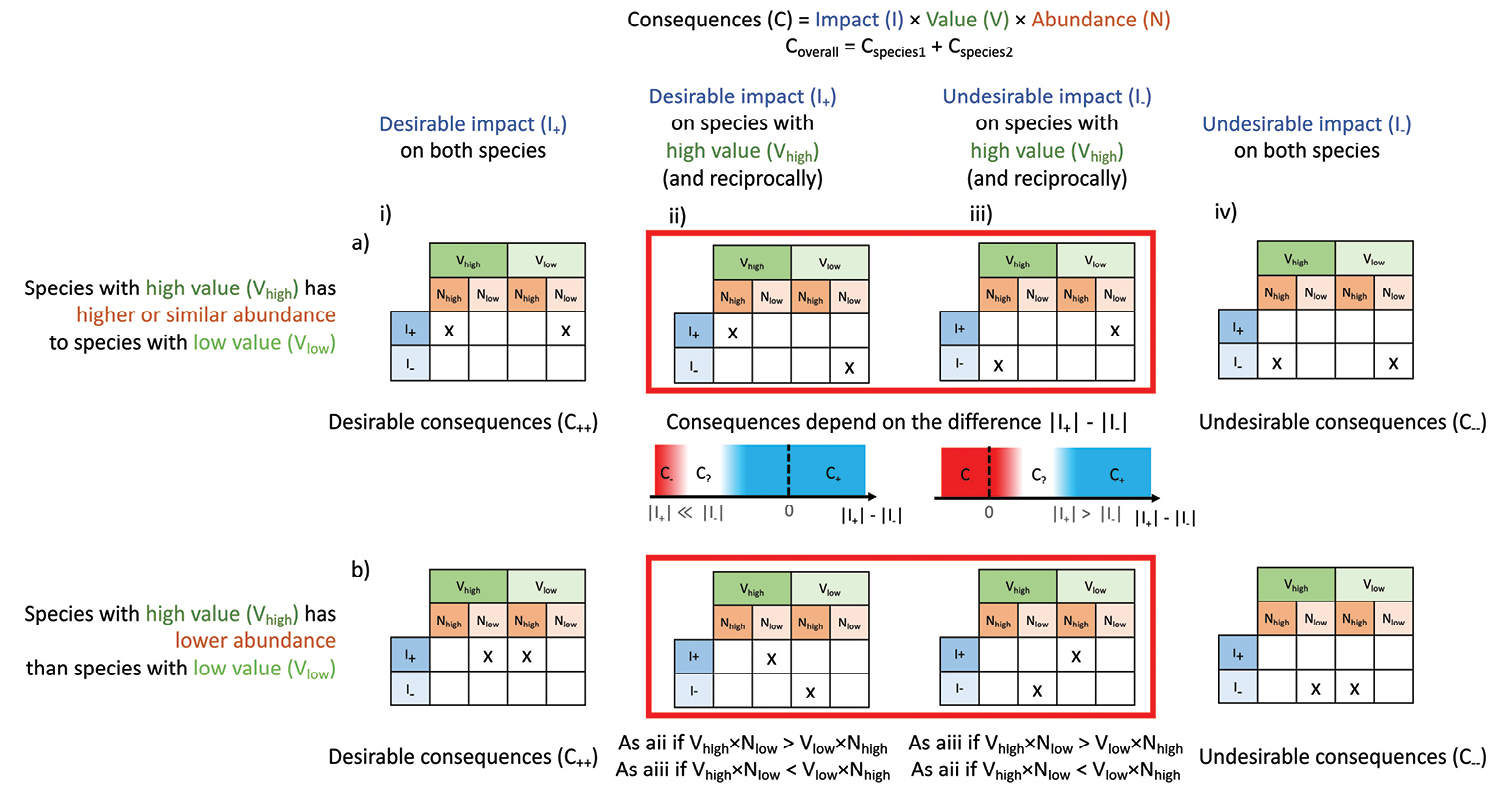
|
||
|
Applying the framework presented in Equation 1 to determine the likely consequence of a management action on a system with two species, highlighting possible moral dilemmas in red. In the case shown a is set to 1 for simplicity, but the two species have different inherent values Vhigh and Vlow (i.e. how individuals are valued does not vary with abundance, but individuals of one species are valued more than the other species). The likely consequence changes with the relative abundance of the two species [top row (a) vs. bottom row (b)] and with whether the impact of the management intervention is positive (I+) or negative (I-) on the respective species [columns (i-iv)]. a) The species with high value has higher or similar abundance to the species with low value. If the impacts I+ and I- have similar orders of magnitudes or |I+| > |I-|, scenario (a,ii) generates positive consequences (C+) because Vhigh × Nhigh > Vlow × Nlow. Similarly, if the impacts I+ and I- have similar orders of magnitudes or |I+| < |I-|, scenario (a,iii) generates negative consequences (C-). If |I+| |I-| or |I+| > |I-| (for scenarios (a,ii) and (a,iii) respectively), the difference of impact can counter-balance Vhigh × Nhigh > Vlow × Nlow, making desirable consequences undesirable and vice versa. However, the difference of magnitude between I+ and I- at which this switch occurs is difficult to determine due to the different units of V, N, and I. This uncertainty corresponds to a moral dilemma due to a conflict between the desire to have a small positive impact on the species with the larger value and abundance, and the desire to avoid a very negative impact on the species with the lower value and abundance for scenario (a,ii). For scenario (a,iii), the dilemma is due to a conflict between the desire to avoid a small negative impact on the species with the higher value and abundance, and the desire to have a very positive impact on the species with the lower value and abundance. b) The species with higher value Vhigh has the lower abundance Nlow. If impacts are different between the two species, the opposition between V and N will most likely generate moral dilemmas (C?). If Vhigh × Nlow > Vlow × Nhigh, scenario (b,ii) is equivalent to scenario (a,ii), and to scenario (a,iii) otherwise (and scenario (b,iii) is equivalent to scenario (b,iii), and to scenario (a,ii) otherwise), but because value and abundance have different units, it is difficult to determine for which value and abundance Vhigh × Nlow = Vlow × Nhigh. Therefore, an additional moral dilemma arises due to a conflict between the desire to avoid a negative impact on the larger population and the desire to avoid a negative impact on the species with the higher value. |